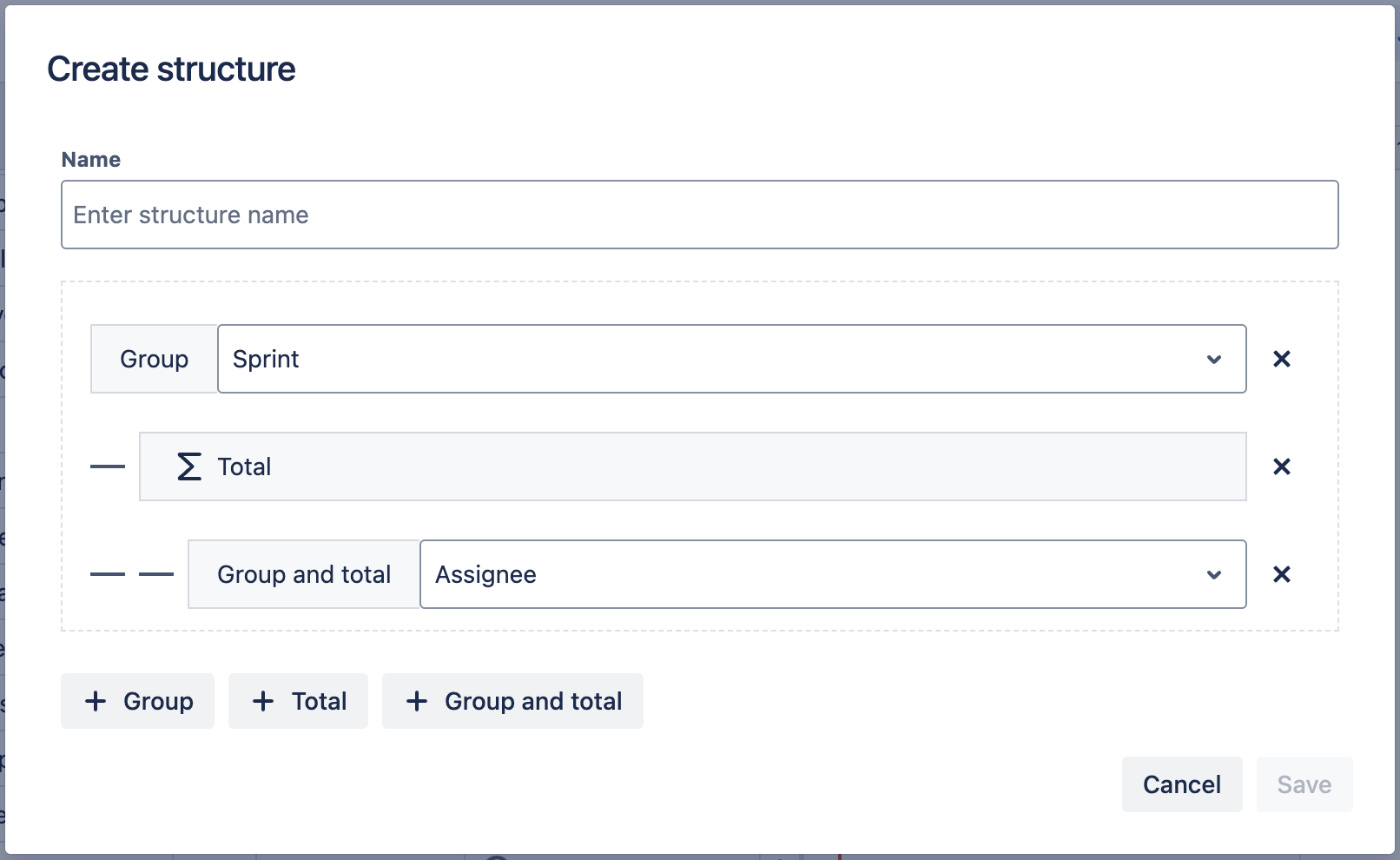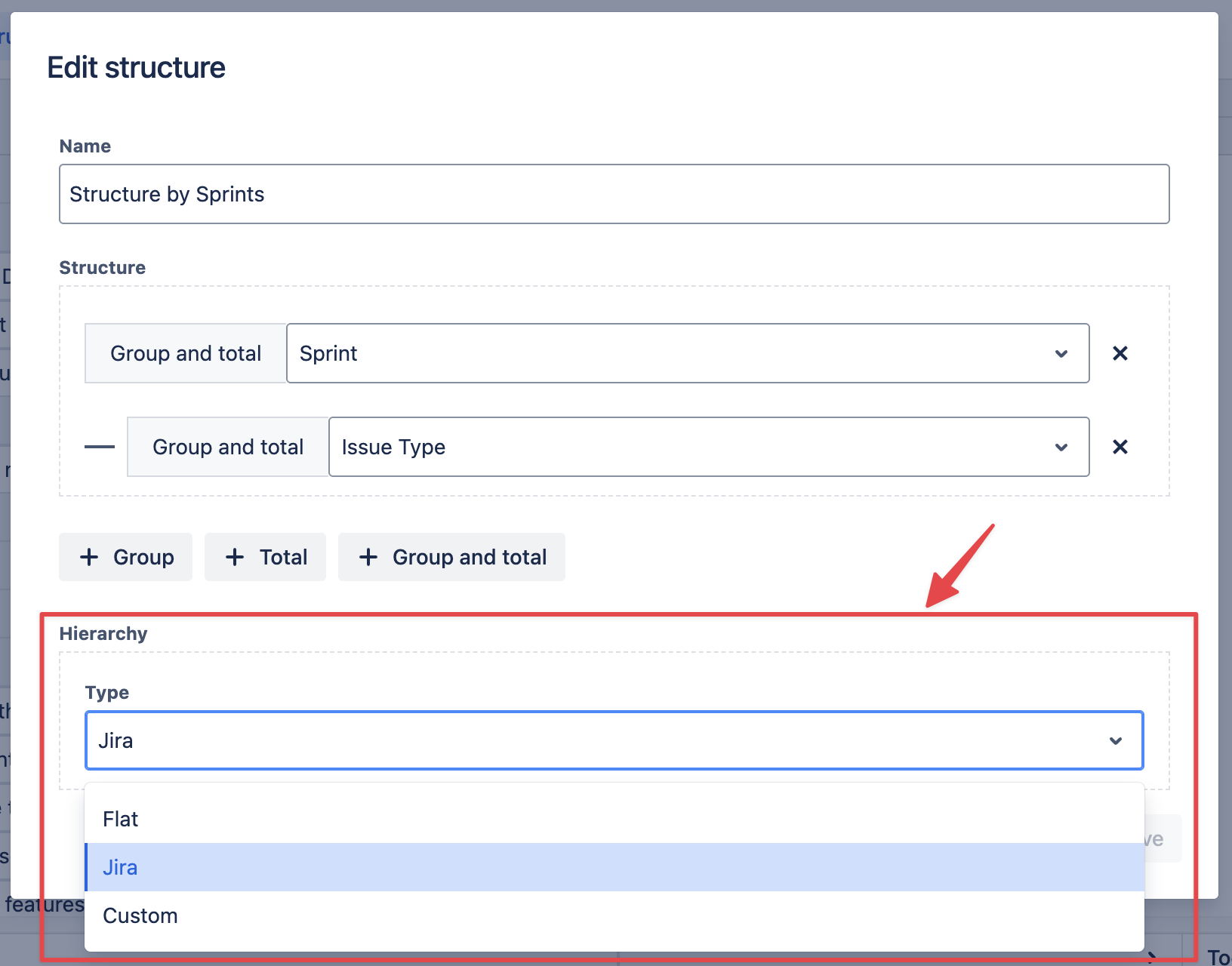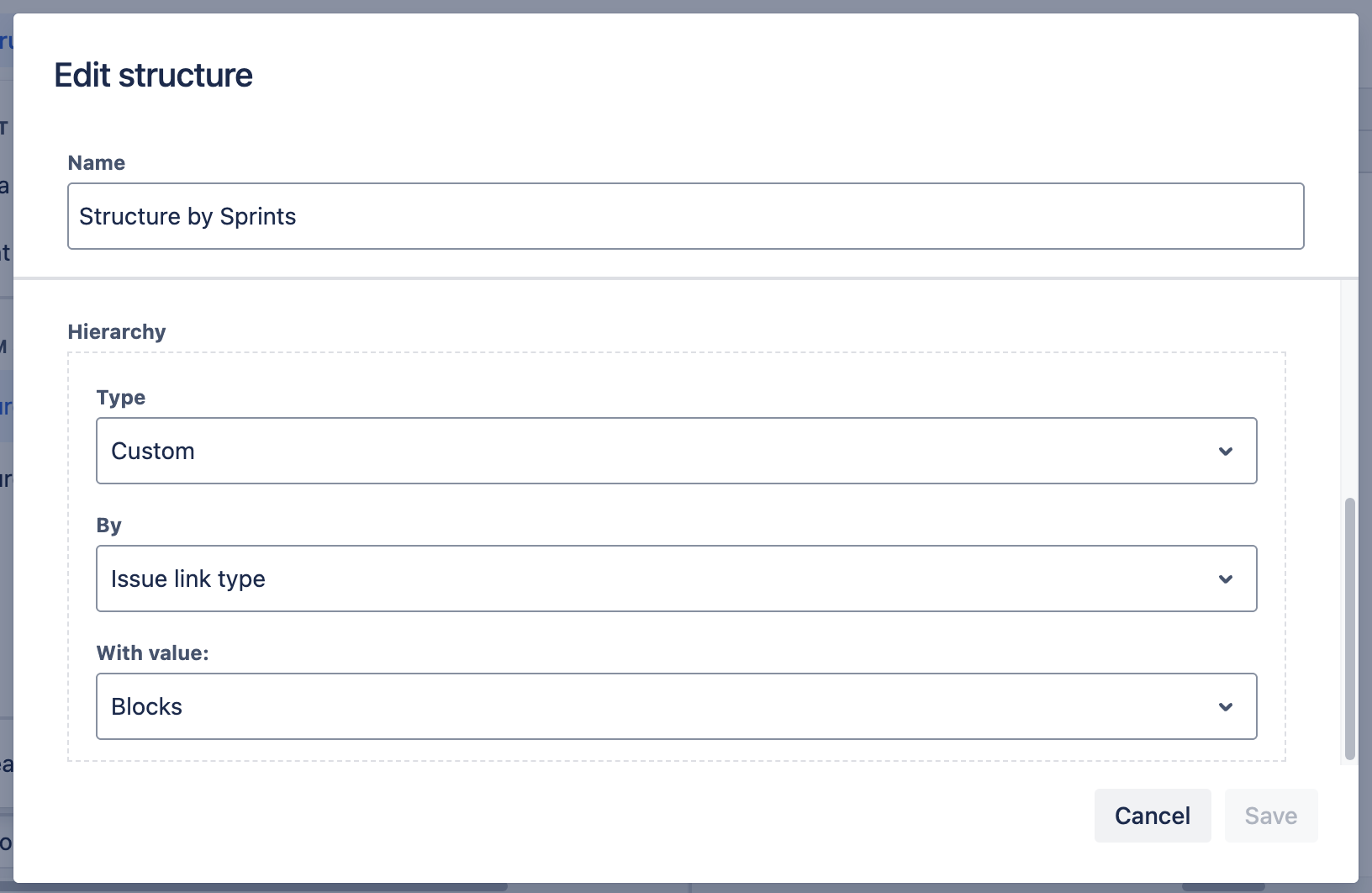Structure
What is Structure in GanttTable?
The Structure provides a unique way for you to visualize and manage your tasks, sprints, and projects in the most convenient way possible. You can use this feature to determine how you want to organize your work on the table based on Group, Total, and Group and total.
You can save this new structure as a new view and use it again later. Or, you can also set it as the default view for other members.
For more details, please visit GanttTable’s View feature.

Group | Allows you to categorize or organize issues by a specific field or criterion for better analysis or visualization. |
Total | Provides a numerical summary of the selected data (eg. overall count, sum, or cumulative value of issues). |
Group and total | Displays issues categorized by a field (grouped) and provide the cumulative count or metric for each group. For example: the Group and total option organizes your issues based on a specific field and shows aggerate data for each column in the table (number of assignees of each sprint or project, the total timeline of start and end dates, the total progress of each sprint/project…) |
Using Hierarchy in a Group by Structure
When creating a custom structure, GanttTable also supports visualizing hierarchy for how you group and organize work on the table.
-20250403-103031.png?inst-v=f0b7804f-a325-4d74-b543-abb5d3458afe)
At the moment, you can now choose between different hierarchy styles:
Flat
Jira
Custom

For Custom hierarchy in structure, GanttTable uses the Issue link to visualize the hierarchy among issues on the table.
Its purpose is to empower users to make a flexible hierarchy in the Group by Structure using the issue link type.

So, users can build and organize a nested issue system with Jira’s or a special issue link type that users have already defined in their instance.

